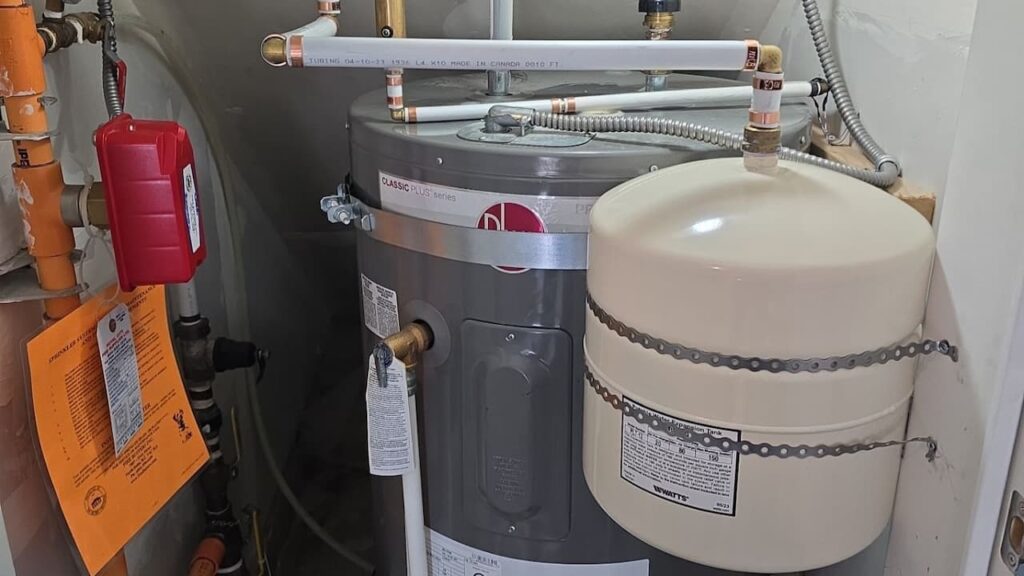Gas Leak: Why It Happens and What to Do
Gas leaks are a serious safety hazard that can lead to devastating consequences if not addressed promptly. From explosions and fires to health complications…

Draining a hot water tank may seem daunting, but it’s essential for maintaining your water heater’s efficiency and longevity. Most water heaters have a large, insulated tank that stores hot water for everyday use. Over time, minerals and sediment from the water can build up in the tank. This buildup can affect the heater’s performance and even lead to costly repairs.
In this guide, we’ll walk you through the process of how to drain a hot water tank safely and effectively.
It’s a good practice to flush your water heater every six months. This regular maintenance helps prevent sediment buildup and ensures that your heater operates efficiently. However, if you live in an area with hard water, you might need to flush your tank more frequently, every three months. Hard water contains more minerals, which can accumulate quickly in your tank. Keeping your water heater clean not only improves its performance but can also extend its lifespan.
Before you start the draining process, gather a few essential tools:
If you have a gas water heater, make sure to switch off the gas supply and extinguish the pilot light before beginning. For electric water heaters, unplug the unit or trip the circuit breaker to ensure safety during the process.
Safety should always come first when working with any appliance. Here are some important safety measures to consider:
Taking these precautions will help you avoid accidents and ensure a smoother, draining experience.
Now that you have your tools and safety measures in place, let’s go through the steps on how to drain a water heater efficiently.
For electric water heaters, locate the breaker in your fuse box and switch it off. This ensures that no power is running to the unit while you work. If you have a gas water heater, set the gas valve to “pilot” or turn it off completely.
Next, shut off the water supply to the heater. You can find the valve in the cold-water pipe above the water heater. Turning off the water supply prevents more water from entering the tank while you drain it. To ensure that pressure is released, turn on a hot water faucet somewhere in the house and let it run until no more water flows.
Locate the drain valve near the bottom of the tank. It’s typically a small valve that you can turn with a screwdriver or by hand. Attach your garden hose to this valve, making sure it’s secure. Place the other end of the hose in a safe location, such as a floor drain or outside on a driveway, where the water can drain without causing damage.
Once the hose is in place, use a screwdriver or lever to open the drain valve. Water will begin to flow out of the tank through the hose. Be prepared for hot water, so stand clear and ensure that pets and children are at a safe distance.
To help the water drain more quickly, open the pressure relief valve located on the top of the tank. This allows air to enter the tank, making it easier for water to escape.
You can flush the tank out if you want to clean it further. Turn the cold water supply on for a short period, then turn it off. Repeat this process a few times to stir up any remaining sediment at the bottom of the tank.
Once the tank is empty and you’ve flushed it out, carefully close the drain valve tightly. Disconnect the hose and ensure that no water is leaking from the valve.
Next, turn the cold water supply back on. This will refill the tank with fresh water. Allow the tank to fill before proceeding to the next step.
For electric heaters, switch the breaker back on. For gas heaters, reset the gas valve to “on” and relight the pilot light if necessary. Follow the manufacturer’s instructions for safely relighting the pilot light.
After everything is reconnected, inspect the drain valve and hose connection to ensure there are no leaks. If you see any water dripping, tighten the connections or check the valve for damage. Learn more about why hot water heating leaks.
If you’re looking for professional help with draining your water heater, installing a new one, heating maintenance, or any other plumbing service in Surrey, Vancouver, Burnaby, or anywhere in British Columbia, consider TaskPro. Our licensed and insured service professionals are ready to expertly handle all your heating needs. With our commitment to quality and customer satisfaction, you can trust us to keep your home’s hot water system running smoothly.
Failing to drain your hot water tank can lead to a buildup of sediment, which hampers the heater’s efficiency. Over time, this can cause significant damage to the heater and your plumbing system, leading to costly repairs.
Draining a hot water tank typically takes between 20 to 60 minutes according to myhealth.alberta.ca, depending on the size of the tank and the amount of sediment inside. Be cautious while opening and closing the drain valve to avoid damaging it.
You can tell your tank is full when water flows out at full pressure through the open faucet. It’s safe to turn the electricity back on for electric heaters or adjust the thermostat for gas heaters.
Share this Guide
Gas leaks are a serious safety hazard that can lead to devastating consequences if not addressed promptly. From explosions and fires to health complications…
Septic tanks are a vital component of wastewater management systems, particularly in areas where municipal sewer systems are unavailable. These underground structures treat and…
Choosing the right toilet for your home is more than a simple decision; it’s an investment in comfort, efficiency, and functionality. The type of…